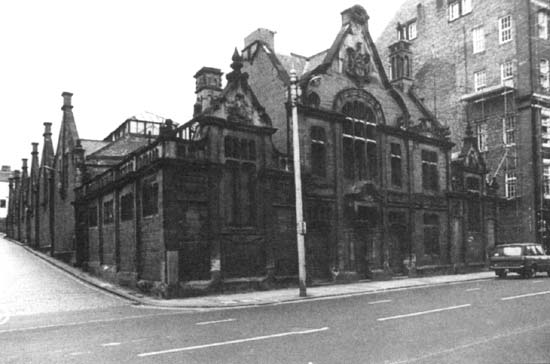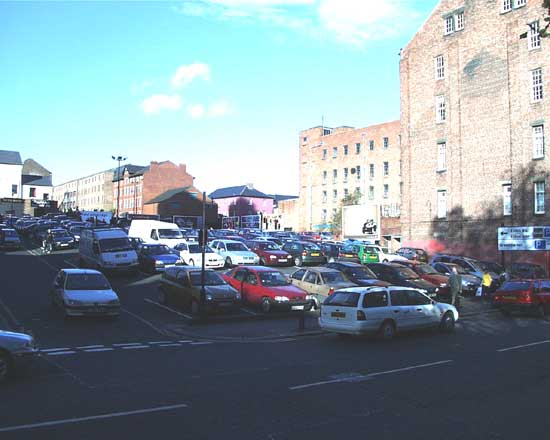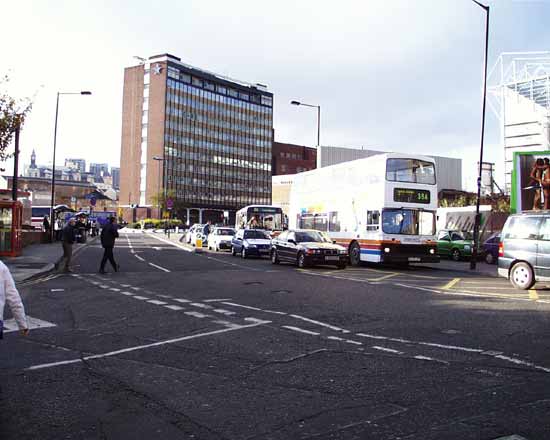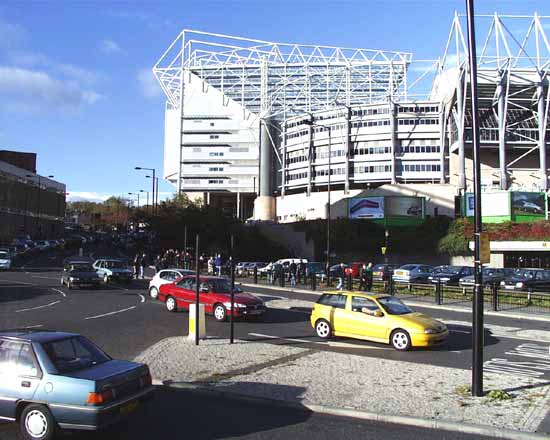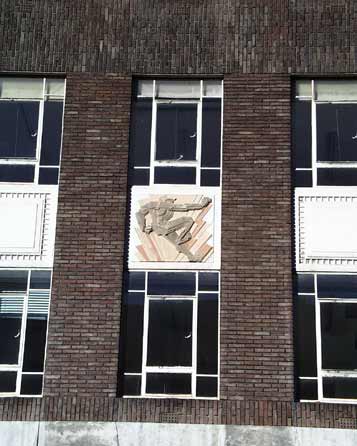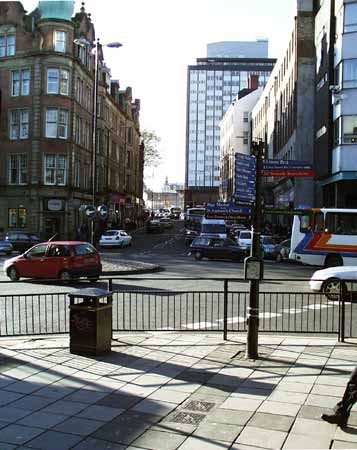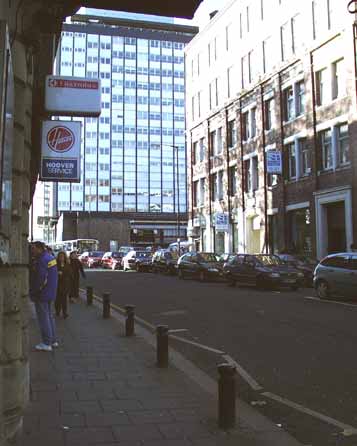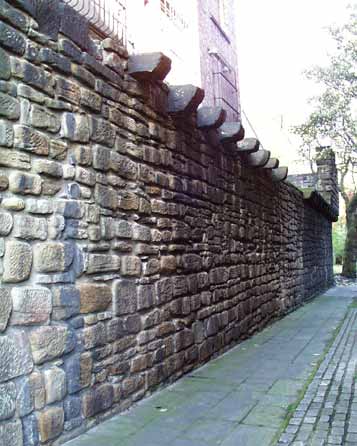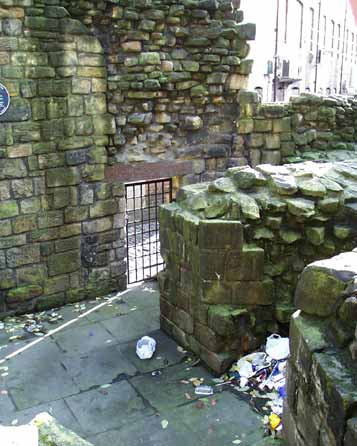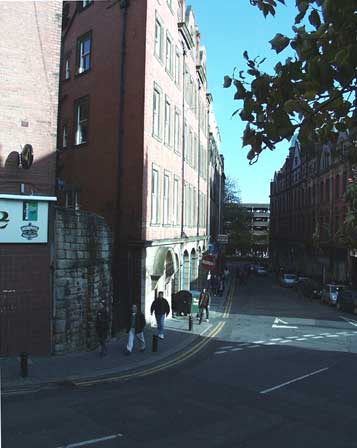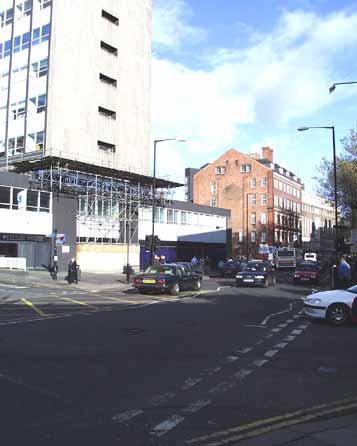|
Gallowgate
Sat. 4th Nov., 2000
|
|
To most Newcastle folk Gallowgate means football. The stadium is situated at the junction of nearby Barrack Road and
Strawberry Place.Gallowgate originally led from the New Gate Gaol to the town gibbet at the site of today's football stadium. Only prisoners from the town were executed here, felons from the County were
hanged outside the West Gate, where the Tyne Theatre stands today. The last Gallowgate hanging was in 1844: Mark Sherwood was executed for killing his wife. This detail is from the 1920s Millers Sale Room
building extolls the strength and enterprise of Tyneside folk |
 |
|
|
|
|
 |
 |
|
This is a view looking west along Gallowgate from its junction with Percy Street, right, Newgate
Street, left, and Blackett Street, behind.During the 1970s the council experimented with a strange roundabout with slots for right turning traffic. Visitors and locals alike were baffled by this
arrangement. Most of the older buildings in this shot date from 1900. That modern office block is Wellbar House, a government office, was built in the 1960s. The weather centre is housed here.
|
|
|
The sun was bright and low in the sky today. While some parts of the UK suffer under swollen rivers and floods, Newcastle
escaped ravages.We suffered downpours with the rest, but our rivers lie in steep valleys and the worst we had was some overwhelmed storm drains and some run off from waterlogged fields. The usual
Saturday crowd was augmented by football visitors and the start of the Christmas rush. Gallowgate is not a shopping street, its major point of focus is the Coach Station. |
|
|
Here the Town walls lead around Gallowgate. The wall crosses Darn Crook, and until 1810 blocked its
northern end. At that time a way was cut through and linked Darn Crook with Gallowgate at the site where the Coach Station stands today.It was this point in the town defences that the Scottish General
Baillie and his troops broke through in 1644 during the
First Civil War.
|
|
|
Here, behind the Coach Station, are the remains of a tower. Sadly, some of today's Novocastrians see this part of their
City's heritage as a rubbish bin. |
|
|
You can see the old town wall on the left of this view of Darn Crook. Before 1810 it formed the end of the cul-de-sac,
its line now preserved in the road markings. Newgate Street is at the far end; the Eldon Square car park is visible.The name Darn Crook is derived from from "dark crooked lane". The large brick building
was erected around 1900. The site next to the wall had been occupied for many years by a windmill. It was badly damaged by a fire in the first quarter of the eighteenth century, and was finally demolished in
1896. Below is a view of the Coach station, built in the early 1930s. |
|
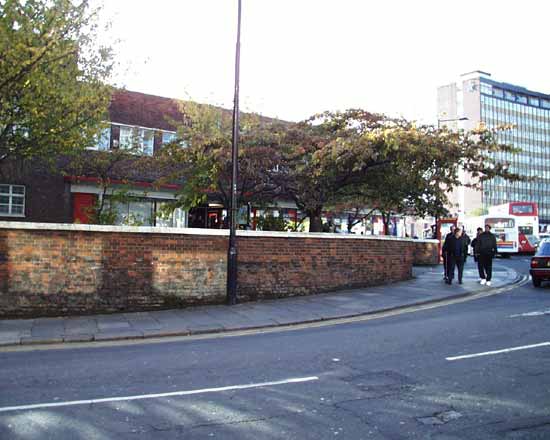 |
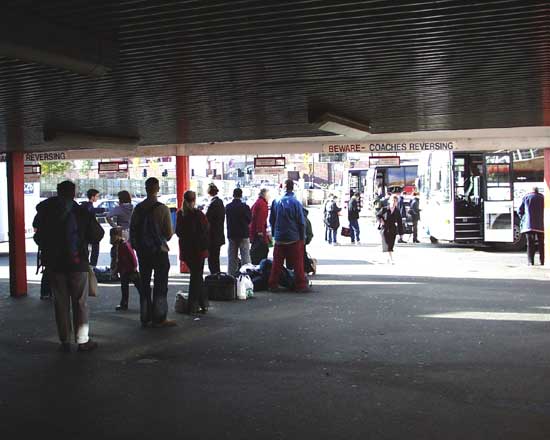 |
 |
 |
|
Below is the Gallowgate Bath House, seen in 1968. Not a place for swimming and recreation, this building was a public wash house. This
Victorian amenety survived well into the twentieth century; this building finally closed in 1972 and was demolished to make way for..... a car park. See the view of the same place today! |
|
|
Photo below is the property of Tyne & Wear Archives Service |
|
 |
|
Here from the junction of Darn Crook looking west, the large Brewery office building dominates the view. That blue star gives the clue to
the home of "Brown Ale" and "Exhibition" brew. The property to the left of this building for 3 hectares is occupied by the Brewery. The tantalising aroma of hops pervades this area of the city on a regular basis. Below
is the site of the original gallows, now a football stadium. Barrack Road leads uphill from the roundabout in the foreground. |
|
|
 |
 |
|
This view of Wellbar House reinforces the adage an old woman uttered to me in the mid 1960s when I visited Newcastle for the
first time. She said, "N'casell 'll be a grand playace when eets finished." How right she was. On that visit trolleybuses still glided majestically through the streets, and the Beatles' film "Yellow
Submarine" premiered at the Odeon in Pilgrim Street. I finally made the city my home in 1972, having lived in the Hebrides, a group of west Scottish islands, for the previous few years. |
|
|
 |
|
|
 |
|
If you should arrive here via a search, or be missing the navigation on the left hand side, click this button.
|
|



